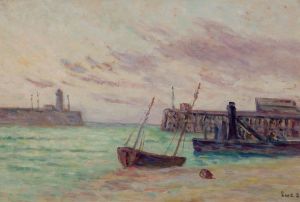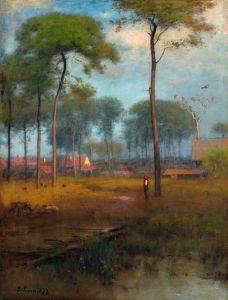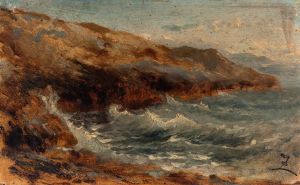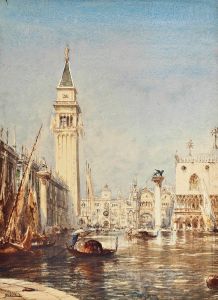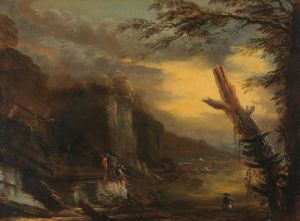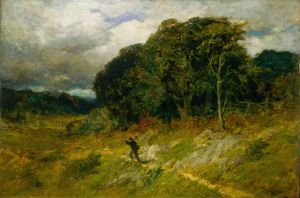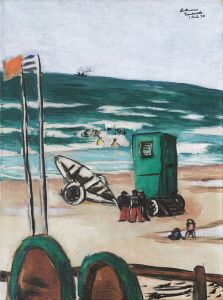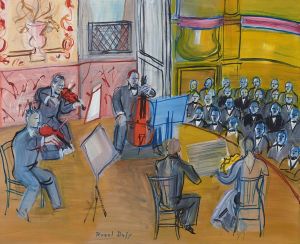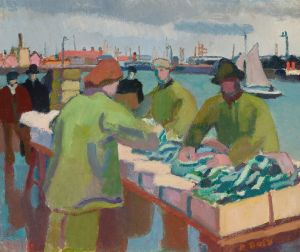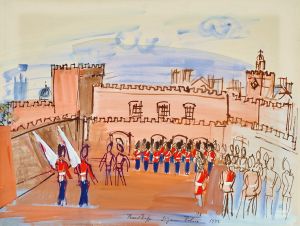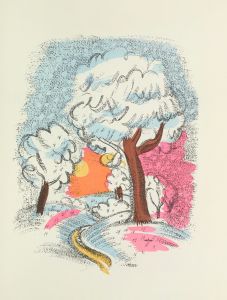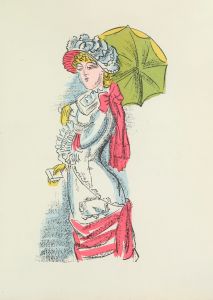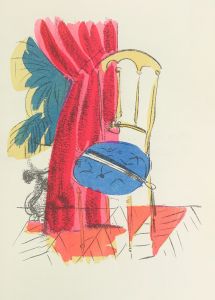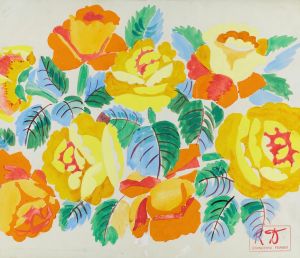
Le réservoir à Golfe-Juan, à l’oiseau
A hand-painted replica of Raoul Dufy’s masterpiece Le réservoir à Golfe-Juan, à l’oiseau, meticulously crafted by professional artists to capture the true essence of the original. Each piece is created with museum-quality canvas and rare mineral pigments, carefully painted by experienced artists with delicate brushstrokes and rich, layered colors to perfectly recreate the texture of the original artwork. Unlike machine-printed reproductions, this hand-painted version brings the painting to life, infused with the artist’s emotions and skill in every stroke. Whether for personal collection or home decoration, it instantly elevates the artistic atmosphere of any space.
Raoul Dufy was a French Fauvist painter known for his colorful and decorative style, which often depicted leisure activities and landscapes. One of his works, "Le réservoir à Golfe-Juan, à l’oiseau," exemplifies his vibrant approach to painting and his fascination with capturing the essence of a scene through color and form.
Dufy was born on June 3, 1877, in Le Havre, France. He began his artistic education at the École des Beaux-Arts in Le Havre and later continued his studies at the École Nationale Supérieure des Beaux-Arts in Paris. Initially influenced by the Impressionists, Dufy’s style evolved significantly after encountering the works of Henri Matisse and other Fauvist painters. The Fauvist movement, characterized by bold colors and expressive brushwork, had a profound impact on Dufy’s artistic development.
"Le réservoir à Golfe-Juan, à l’oiseau" is a painting that reflects Dufy’s mature style, where he masterfully combines vibrant colors with fluid lines to create a sense of movement and joy. The painting depicts a scene at Golfe-Juan, a small town on the French Riviera known for its picturesque landscapes and Mediterranean charm. Dufy often visited this region, drawn by its light and vibrant atmosphere, which perfectly suited his artistic sensibilities.
In this work, Dufy employs a bright and varied color palette, using blues, greens, and yellows to convey the lively and sunny environment of Golfe-Juan. The composition is dynamic, with the reservoir and surrounding landscape depicted in a way that emphasizes the harmony between nature and human-made structures. The presence of a bird in the painting adds a whimsical touch, a common motif in Dufy’s work that symbolizes freedom and the beauty of nature.
Dufy’s technique in "Le réservoir à Golfe-Juan, à l’oiseau" showcases his ability to blend elements of Fauvism with his own unique style. His use of color is not merely representational but serves to evoke an emotional response from the viewer. The brushwork is loose and expressive, allowing the colors to flow into one another and creating a sense of spontaneity and lightness.
Throughout his career, Dufy was celebrated for his ability to capture the joy and vibrancy of life. His works often depict scenes of leisure, music, and celebration, reflecting his optimistic outlook and appreciation for the beauty of everyday moments. "Le réservoir à Golfe-Juan, à l’oiseau" is a testament to Dufy’s skill in transforming ordinary scenes into extraordinary visual experiences through his innovative use of color and form.
Raoul Dufy continued to paint and exhibit his work until his death on March 23, 1953, in Forcalquier, France. His legacy endures through his contributions to modern art, particularly his role in the development of Fauvism and his influence on subsequent generations of artists. "Le réservoir à Golfe-Juan, à l’oiseau" remains a celebrated example of Dufy’s artistic vision, capturing the essence of a moment with elegance and vibrancy.





